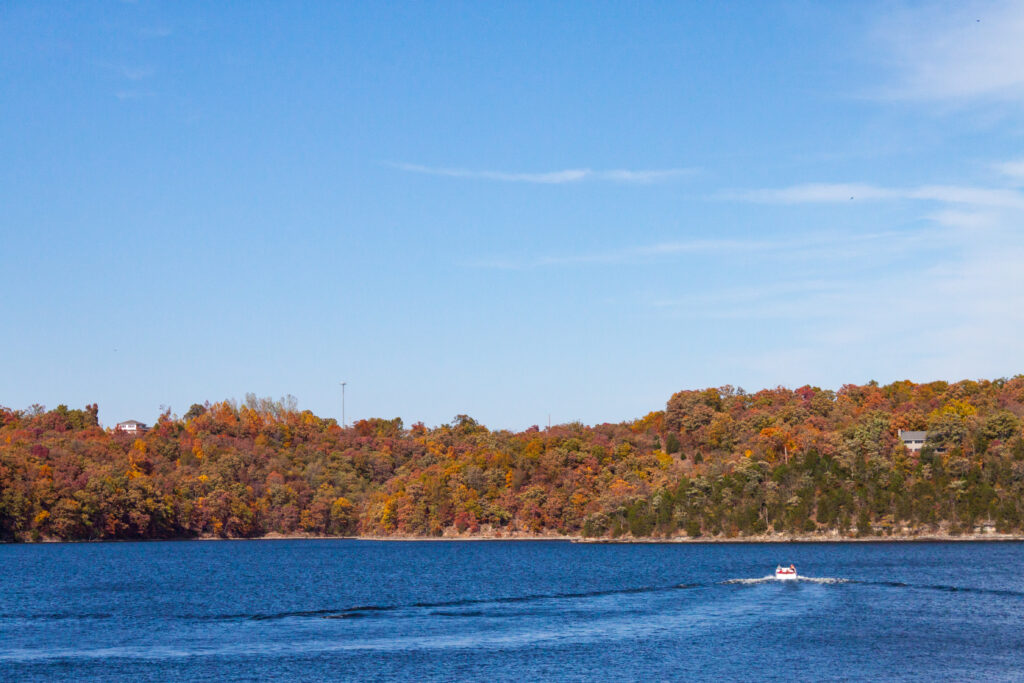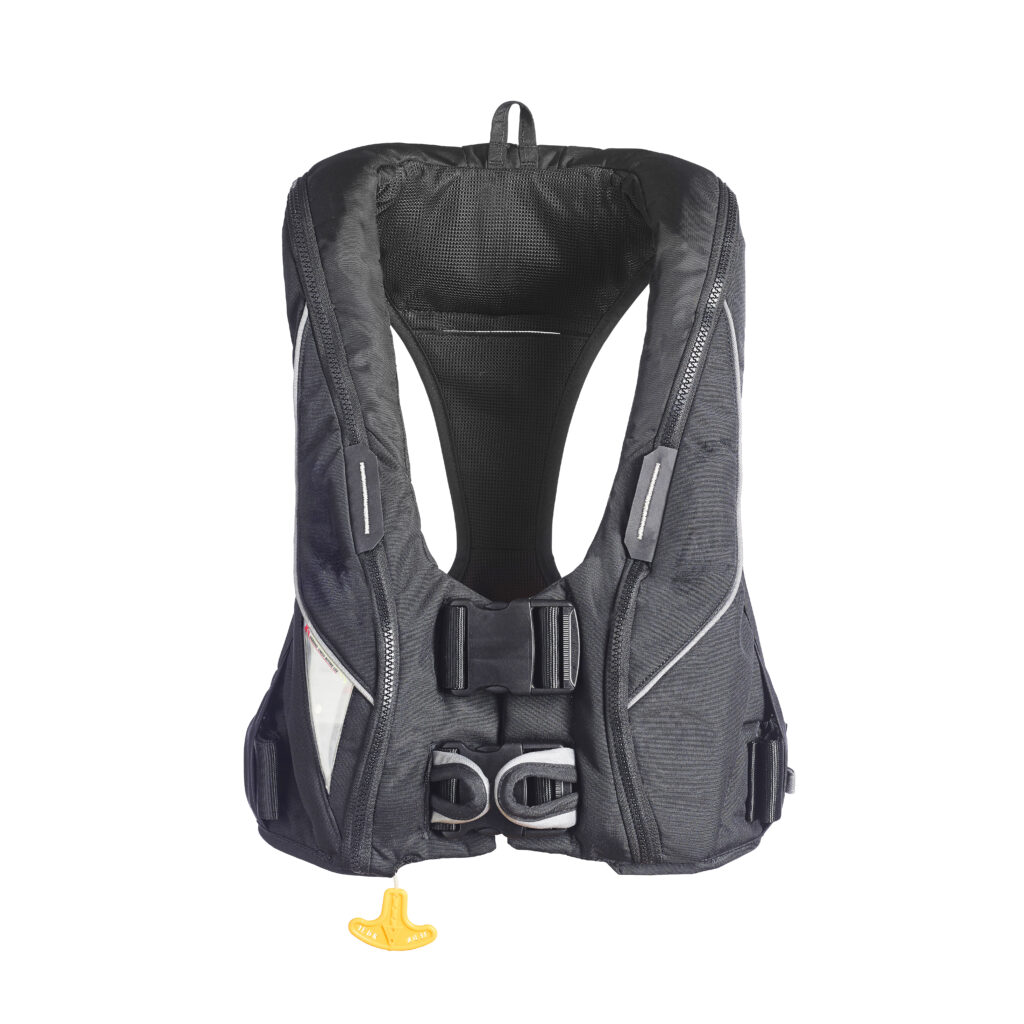The surprising truth about cold water that every boater should know
by Sky Smith & Nathan Bechtold
Summer is the season for boating at Lake of the Ozarks, but in many ways, nothing beats the weather of fall. Yes, fall soon turns to winter, and in the Midwest that can mean no more boating. But not necessarily.
Crisp weather can be very good for boating, and if you fish, I don’t think the fish can taste better than out of a really cold lake. And nothing beats a late-October cruise up the Lake, when the maples, oaks, and hickories are putting on a show across 1,150 miles of shoreline.
Many people leave their boats in the water all year, as long as icing-in is not an issue. Even then you can take precautions, like using a bubbler, to keep the boat from being damaged by the ice. And while inboard boats need to be winterized, outboards can handle winter just fine. No one knows this better than winter anglers, some of whom say snowy days are the best for fishing. Their boats don’t mind the winter, and with the increasing popularity of outboards for recreational boaters—center-consoles in particular—more people have the option to enjoy boating well into the cooler months.
But while cool-weather boating can be nice, the cold temperatures also pose the biggest risk. Wet hands can stick to metal, and cold water drowns. Even warm water has its hazards, but cold water just speeds things up.
One year at the Seattle boat show I listened to a speaker discuss cold water survival and I think he used the “50-50-50” line. If memory is correct that meant in 50-degree water, a 50-year-old would last 50 minutes. A bit of research reveals that was just an old sailor’s myth. In reality, it looks like 50-degree water can be an almost instant end, and any temperature less than 70 degrees is dangerous. So the worst thing about cold weather boating is the danger if you fall in. If it’s really cold and you are bundled up, you don’t have as much flexibility. If you have gloves on, you can’t get the same grip. If there is ice on the deck… you get the picture.
The water temperature falls quickly as autumn sets in and the nights approach freezing. By late-October, the Lake of the Ozarks temperature is typically in the mid-60s. By November, it’s in the 50s. Those temperatures don’t sound fatal, but when you are immersed in cold water, cold shock can occur almost instantly. According to the National Center for Cold Water Safety, “Controlling your breathing and holding your breath becomes progressively more difficult as water temperature falls as water temperature falls from 70°F to 60°F.” The NCCWS rates water below 70 degrees as dangerous, and any water below 60 degrees is just as dangerous as water in the 30s.

Cold shock results in a lack of breathing control. When a person hits cold water they have an involuntary “gasping” for air reaction. With the gasp, often times a person fills their lungs with water, hence the danger. Gasping underwater = bad. Cold shock reaches its maximum intensity between 50 and 60 degrees.
With cold water, muscle movement or control disappears. If you are bundled up, you already have reduced movement, and clothing can absorb water, making it difficult to stay afloat.

This is why a flotation device is absolutely crucial. But if it’s not on you before you hit the water, you probably won’t be able to get a life preserver on. And the wrong flotation device won’t hold your head out of the waves, especially if you have a lot of heavy clothing on. Life jackets can help, but only if they fit good and hold your head out of the water and waves. Oh, and hypothermia will set in after about 30 minutes (though more body mass can delay the onset of hypothermia for a little longer). The best bet: invest in an auto-inflating vest, and put it on every time you climb aboard for a cool-weather ride. A good quality one can be gotten for about $100, a small price to potentially save a life.
Done right, off-season boating can be refreshing, fun and exciting. Don’t be scared to go out when the water is cold! Just make sure you take a few precautions before you shove off.
For more information, visit www.coldwatersafety.org
